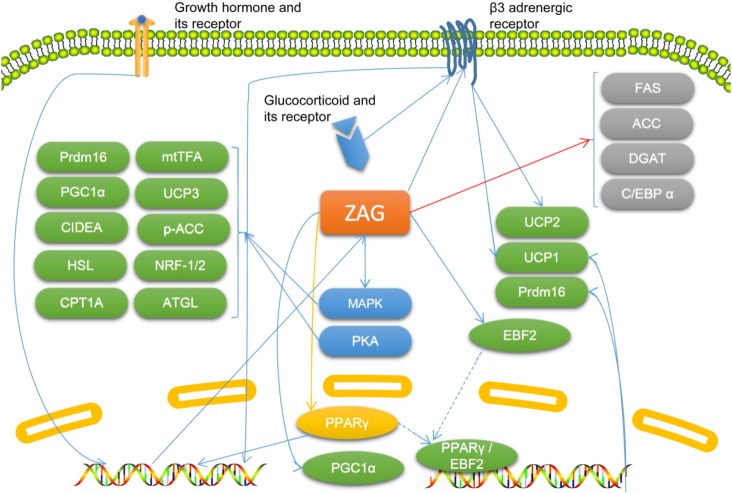Fig. 1.
The known molecular mechanisms by which zinc-α2-glycoprotein (ZAG) participates in lipid metabolism. Molecules colored in green are known to be upregulated by ZAG directly or indirectly, and those colored in grey are known to be downregulated by ZAG directly or indirectly. The molecule colored in yellow (PPARγ) is affected by ZAG but the results are controversial. Blue arrows indicate promotional effects, red arrow indicates inhibitory effects, and yellow arrow indicates controversial effects. ACC, acetyl-CoA carboxylase; ATGL, adipose triglyceride lipase; C/EBPα, CAAT-enhancer-binding proteins α; CIDEA, cell death-inducing DNA fragmentation factor alpha-like effector A; CPT1A, carnitine palmitoyltransferase 1A; DGAT, acyl-coenzyme A: diacylglycerol transferase; EBF2, early B cell factor 2; FAS, fatty-acid synthase; HSL, hormone-sensitive lipase; MAPK, mitogen-activated protein kinase; mtTFA, mitochondrial transcription factor A; NRF-1/2, nuclear respiratory factor-1/2; PGC1α, PPARγ coactivator 1α; PKA, protein kinase A; PPARγ, peroxisome proliferator-activated receptor γ; Prdm16, PR/SET domain 16; UCP, uncoupling protein.

